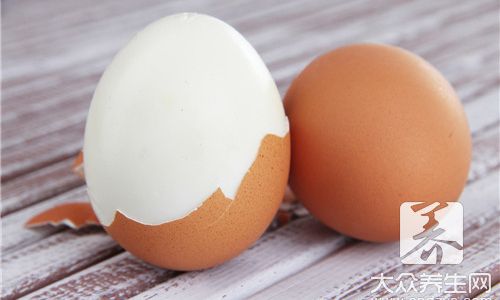Table of content
- Shape and Appearance of the Shell
- Color of the Shell
- Air Cell Size
- Float Test
- Preparing for Candling
- Observing the Yolk and White
- Smell Test
- Taste Test
- Reading the Date
- Storage Conditions
- Haugh Unit Test
- Albumen pH Test
- Shell Strength and Porosity Tests
- Buy in Moderation
- Inspect Before Buying
- Proper Storage
- Use First-In, First-Out
- Dispose of Expired Eggs
Introduction
Eggs are a staple in many diets worldwide, offering a rich source of protein, essential vitamins, and minerals. From breakfast scrambles to baking masterpieces, eggs play a vital role in countless culinary creations. However, ensuring the freshness of eggs before using them is crucial for both safety and quality. Consuming stale or spoiled eggs can lead to food poisoning, while fresh eggs provide the best taste and texture. This article delves into various methods to determine the freshness of eggs, helping consumers make informed choices and avoid potential health risks.

Understanding Egg Freshness
Before discussing how to assess egg freshness, it’s essential to understand what freshness entails in the context of eggs. Freshness primarily refers to the egg’s age since being laid. As eggs age, changes occur internally and externally that affect their quality and safety. Fresh eggs have a firmer yolk and thicker white, while older eggs tend to have a flatter yolk and runnier white. Additionally, the air cell at the egg’s broader end enlarges as the egg ages, making it easier to detect visually and through other methods.
Visual Inspection
One of the simplest and most direct ways to gauge egg freshness is through visual inspection. Here are some key indicators to look for:
Shape and Appearance of the Shell
- Fresh eggs typically have clean, smooth shells without cracks or blemishes.
- Older eggs might have duller shells or slight imperfections due to handling and storage conditions.
Color of the Shell
- While shell color can vary based on the breed of the hen, fresh eggs generally have a more vibrant hue.
- As eggs age, the shell color may fade slightly.
Air Cell Size
- The air cell, located at the broader end of the egg, naturally expands as the egg ages.
- To check the air cell, hold the egg up to a bright light. A larger, more noticeable air cell indicates an older egg.
Float Test
- This classic test involves placing the egg in a bowl of water.
- Fresh eggs have a smaller air cell and denser contents, causing them to sink or stand on one end at the bottom.
- Older eggs with larger air cells will float because the increased air space reduces their density.
- Note that while the float test is reliable, it may not detect very early signs of aging and can be affected by temperature and storage conditions.
Candling
Candling is a technique used to inspect the interior of eggs using a bright light source, similar to a flashlight or specialized candling device. This method is commonly employed by poultry farmers and hatcheries but can also be useful for consumers:

Preparing for Candling
- Ensure the room is dark to minimize glare and enhance visibility.
- Hold the egg gently with the broader end facing the light source.
Observing the Yolk and White
- Fresh eggs will show a compact, round yolk with a clear separation between the yolk and white.
- Older eggs may exhibit a flattened yolk, a larger air cell, and a more diffuse boundary between the yolk and white.
- Discoloration, blood spots, or unusual shapes can also be detected through candling, indicating potential quality issues.
Smell and Taste Tests
While not as definitive as visual or candling methods, smell and taste tests can provide additional clues about egg freshness:
Smell Test
- Crack the egg open and take a careful sniff of the contents.
- Fresh eggs should have a mild, slightly sweet odor.
- Older eggs may develop an off-putting, sulfuric smell due to the breakdown of sulfur compounds within the egg.
Taste Test
- Cooking a small portion of the egg can help assess its freshness through taste.
- Fresh eggs have a rich, creamy flavor.
- Older eggs may taste bland or have a slightly metallic aftertaste.
Date Marking and Storage Conditions
In many countries, eggs are stamped with a “best before” or “pack date” to indicate when they were packaged or laid. While these dates are not always indicative of spoilage, they can serve as a general guideline:
Reading the Date
- Check the carton for a date marking. This can vary by country and producer but typically indicates the egg’s freshness at the time of packaging.
Storage Conditions
- Proper storage is crucial for maintaining egg freshness.
- Eggs should be kept in the refrigerator at a temperature of around 40°F (4°C) or below.
- Avoid storing eggs on the refrigerator door, where temperature fluctuations can occur.
- Use eggs within the recommended timeframe for best quality.
Chemical and Physical Tests
For more precise assessments, chemical and physical tests can be conducted, although these methods are less practical for everyday use:

Haugh Unit Test
- This test measures the height and consistency of the egg white to determine freshness.
- Higher Haugh unit values indicate fresher eggs with thicker, more viscous whites.
Albumen pH Test
- As eggs age, the pH of the albumen (egg white) increases.
- Testing the pH can provide insights into the egg’s freshness, though this method requires specialized equipment.
Shell Strength and Porosity Tests
- Fresh eggs have stronger, less porous shells that better protect the contents from environmental factors.
- Tests measuring shell strength and porosity can indicate the egg’s age and storage conditions.
Consumer Tips and Best Practices
To ensure you always have fresh eggs on hand, follow these consumer tips and best practices:
Buy in Moderation
- Purchase only the number of eggs you need for a few days to a week to minimize storage time.
Inspect Before Buying
- Check the carton for cracks, and ensure the eggs feel cold and have clean shells.
Proper Storage
- Store eggs in the coldest part of the refrigerator, ideally in the main compartment rather than the door.
- Keep eggs in their original carton to protect them from odors and further handling.
Use First-In, First-Out
- Label eggs with the purchase date if you buy in bulk or store them for extended periods.
- Use the oldest eggs first to ensure freshness throughout.
Dispose of Expired Eggs
- If eggs are past their “best before” date or show signs of spoilage, discard them safely to prevent food poisoning.
Conclusion
Determining the freshness of eggs is a straightforward process that involves a combination of visual inspection, candling, smell and taste tests, and understanding storage conditions and date markings. By following these guidelines, consumers can ensure they are using fresh, high-quality eggs that enhance the taste and safety of their meals. Proper storage and timely consumption are key to maintaining egg freshness, making every culinary creation a delightful and safe experience.





0 comments